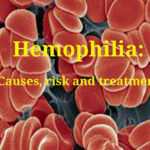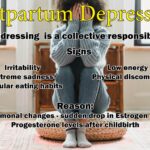Arnold Chiari Malformation is a rare neurological birth defect which may or may not present its symptoms until early teenage. This condition is considered to be one of the rare birth defects, but for sporadic reasons, this defect is known to affect female more than male.
Regardless of the cause, congenital disorders or commonly known as birth defects usually result in disabilities which may affect physically, intellectually or cause developmental delays. While such complications may hamper the quality of life of the child for life-long, timely intervention may help in curbing down the symptomatic complications and improve the functional outcomes.
Chiari Malformation is one such defect which is majorly a congenital defect which may or may not present its symptoms until early teenage. It is a structural defect in the cerebellum part (which is responsible for controlling body balance), where the brain tissues extend into the spinal canal abnormally. This defect usually triggers its progression from the fetal development stage.
While majority of the cases of Chiari malformation occurs during fetal development, only in few cases the condition may be acquired at later stages of life when excessive amounts of cerebrospinal fluid may drain out due to some reason (injury/ infection etc).
Attributing to a plethora of reasons including genetic mutation, improper diet during pregnancy by the mother due to lack of essential nutrients, trauma during pregnancy, infection or exposure to any toxic substance etc, the bony space at the base of the skull remains abnormally small. This in turn exerts pressure on the cerebellum blocking the flow of the CFS which surrounds and helps in protecting the brain and spinal cord.
Prevalence and identification
This condition is considered to be one of the rare birth defects, and various reports suggest that its prevalence is only one in a thousand births in the last decade. But with advancement in technology and diagnostic imaging techniques, the condition may have been under-reported. In most of the congenital cases, the new born do not have any visible symptoms or the symptoms become prominent around their adolescence, which make the exact estimation of this defect extremely difficult. For sporadic reasons, this defect is known to affect female more than male.
This complication can be classified into four categories –
- Type 1 –the prevalence of this type of malformation is the most common among children, where only the lower part of the cerebellum (excluding the brainstem) extends into the opening at the base of the skull, which usually has opening only for the spinal cord. This is the only type which can be acquired.
- Type 2 –this type is usually a consequence in children born with spina bifida (split spine defect). Also known as the classic Chiari Malformation, in this both, the cerebellum and the brain stem extend into the opening.
- Type 3 –this, despite being a rare case, is the most serious form, as it involves herniation and protrusion of the cerebellum and the brain stem into the opening which has a great potential to cause severe neurological defects.
- Type 4 – Being the rarest of all the other types, this type of malformation involves an incomplete/ underdeveloped cerebellum and is sometimes associated with exposed parts of the skull.
While birth defect in the spine (spina bifida) is a common reason, yet other conditions associated with the Chiari Malformation can be excessive build-up of the cerebrospinal fluid(hydrocephalus), cyst development in the central canal of the spinal cord (syringomyelia), disorder in the spine which is progressive that leads to the attachment of spinal cord to the bony spine, or other spinal curvature deformities like scoliosis.
What are the symptoms?
Depending upon the type and severity of the malformation, the symptoms may vary from person to person. While some may be present with no symptoms until late adulthood, others may have persistent symptoms in the early childhood itself.
The most common symptoms include –
- Complications with body balancing and coordination
- Poor vision
- Mild to severe episodes of headaches
- Weakness in the muscles and numbness
In mild cases of type 1, people suffering from this condition do not even know until the malformation is diagnosed accidentally. But in its severe form the patient may undergo severe pain in the lower back of the head connecting to the neck. This intensifying pain triggers with any activity that exerts pressure in the brain such as sneezing or coughing.
Unlike type 1, congenital patients with type 2 develop excess CSF accumulation which causes debilitating pain during bending, coughing or sneezing, constipated bowel movement, or strenuous physical activities.
Is it treatable? – Yes!
Upon suspicion of the malformation, the treating doctors require physical examining to confirm the condition which involves inspecting the proper functioning of the spinal cord and cerebellum. If the person has proper and normal body balance, motor skills, sensation, reflexes, this condition may be ruled out for further diagnostics. On the contrary, other diagnostics like CT scan and MRI may be used to identify the condition with precision.
If the symptoms are not persistent and do not hinder with the quality of life, then treatment may not be necessary. While in severe cases where medication provided to subside pain, do not provide relief and interfere with daily activities, the patient may require a surgical procedure.
While surgery remains the last resort to correct the functional outcomes or curb down the progression of the damage rate to the nervous system, the surgery aims to relieve the pressure on the brain and spine, and re-establish the normal fluid circulation.
Various surgical interventions include :
1. Decompression surgery of the brain stem opening – this procedure requires to surgically remove a minor portion from the bottom of the skull or spinal column to rectify the irregular structure, and creates additional space for the proper circulation of the CSF.
2. Spinal Laminectomy – In this procedure, a part of the arched bone roof in the spinal canal is removed to increase the canal size and reduce the pressure on the nerve roots and spinal cord.
While additional procedure may be required to correct the condition associated with hydrocephalus, but in most cases surgery results in a significant drop in the symptoms and a prolonged time of remission.


Dr SK Rajan
Head – Spine Surgery, Agrim institute of Neurosciences
Artemis Hospital, Gurugram.











